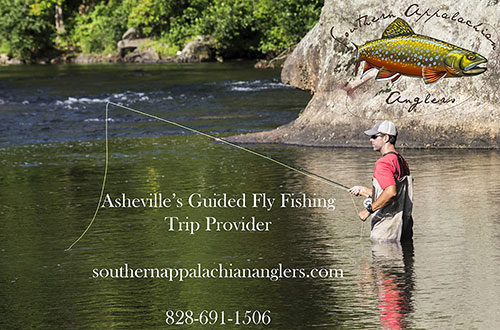Unraveling Some Common Misconceptions
Finally, winter is slowly losing its icy grip here in the Southern Appalachians. With warmer temperatures and longer days ahead, it’s hard for my mind not to wander to chasing one of my favorite fish species on the fly, smallmouth bass, and the upcoming pre-spawn season. The river smallies are just now starting to emerge from their winter holding patterns into a more aggressive feeding nature. My love for these fish came when I first started fishing for them with spinning tackle, and later fly tackle, as I started my guiding career. Through countless hours on the water guiding and fishing myself, I have come to realize that there are several misconceptions that people have when it comes to fly fishing for smallmouth. For the sake of reading time, I’ll focus on two main points that I see as the most prevalent: fly/ tackle selection, and approaching smallie water with a new mindset.
First, let’s discuss fly tackle and fly selection. Many of my clients show up for smallmouth trips with conventional 5 weight rods that they think are “enough” to work with, along with a selection of wooly buggers and small bream poppers. When I hand them an 8- weight rod rigged with a 5” long streamer and 250 grain sinking line, they’re almost always in shock. Smallmouth are predators, and throughout the year they are going to be hunting prey that fits their energy needs: baitfish, big hellgrammites, mice, frogs, crawfish; I’ve even watched one eat a baby duck before. There is a time and a place for smaller flies and presentations, but you should never be afraid to up your rod and fly size when chasing these fish on the fly. I learned this from watching 6-inch smallmouth try to annihilate an 8” fluke or senko. My subsurface smallie box contains articulated streamers up to 8” in length, and some jig patterns that weigh around 1/8 of an ounce and heavier, like a conventional bass jig. You’d be amazed at the size of the fish that will come for these types of flies, both big and small. They are also among one of the strongest freshwater game fish species in the South, and 5-weight rod doesn’t do the fish justice. I personally prefer rods in the 7- 8-weight range to cast these larger flies and fight fish more efficiently.
Smallmouth are also incredibly finicky fish and need to be patterned throughout the year in order to figure out correct presentations. In river systems, you have to change your thought processes away from a trout stream mindset into an ambush predator mindset. Look for places fish can hide from their prey: rock to sand transition zones, ledges, and underwater logs all come to mind. They will often wait in these spots for food to either swim or drift by, and that doesn’t mean that you need to make your flies look wounded or in flight. I think I have caught smallmouth more often simply by giving big flies almost no action in water and waiting for the fish to move on them as it passes by likely ambush points.
Consistent success fly-fishing for smallmouth takes time and willingness to try new and unconventional things. Don’t be scared to sling some meat at these fish and to change your mindset on how to approach these fish, and I can promise you’ll fall in love with them as much as I have. Don’t tell my trout bum friends this, but they have become my new favorite species on the fly.
Ethan Hollifield is an Environmental/Physical Science Teacher and is also a guide for Southern Appalachian Anglers.

